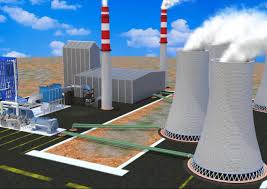Hwange Unit 8 hits first full capacity on trial
HWANGE Thermal Power Station Unit 8 has achieved its first full capacity of 355 megawatts while undergoing trials as Zimbabwe moves to register a record power output and ease electricity challenges in the country.
And in Nyabira, a 25MW centre grid solar plant with enough capacity to help power Mutare, Kadoma and Chegutu now awaits connection to the national grid as more generation capacity is added.
The Second Republic’s signature project of Hwange Unit 7 and 8 has led to improved electricity supplies nationwide as Hwange Thermal Power Station has been generating 740 megawatts, a 10-fold increase compared to mere 74MW produced late February.
Hwange Unit 7 is now fully on grid having passed all tests, while Unit 8 is being worked up, with synchronisation already achieved and the full power tests in progress.
Improved power generation is helping Zimbabwe reduce electricity imports, ease power cuts and drive increased industrial production as there is guaranteed electricity supply, a key economic enabler and driver towards the realisation of Vision 2030.
Power China-Zimbabwe, which is conducting a series of performance tests at the Hwange Unit 8, said it had reached its optimum point.
“The output of Hwange 8 first achieved its full capacity of 355MW on June 13, and then Unit 8 will subsequently carry out a series of performance experiments.
“Meanwhile, the total amount of electricity produced by the Hwange Power Station has reached a record 740MW,” the company posted on its Twitter handle @PowerChinaZimb1.
The Chinese Embassy in Zimbabwe also lauded the progress at Hwange Unit 8 saying: “It’s a milestone that signifies the project is close to completion. The project will boost the power generation to support Zimbabwe’s economic and social development.”
As the country pushes to replicate the 2023 wheat season feat of achieving flour self-sufficiency, the Government has already assured farmers of uninterrupted power supplies during the winter wheat season as Zimbabwe seeks to maintain wheat self-sufficiency.
There have been cases of blackouts during the synchronisation stages of the Hwange Thermal Power Station’s Unit 7, with depressed output at Kariba South due to low water levels also worsening the situation.
However, all that is now a thing of the past as both domestic and industrial users are experiencing steady supply of electricity. The completion of tests at the Hwange Thermal Power Station Unit 8 will tackle the perennial power outage challenges that have been bedevilling the country.-herald











